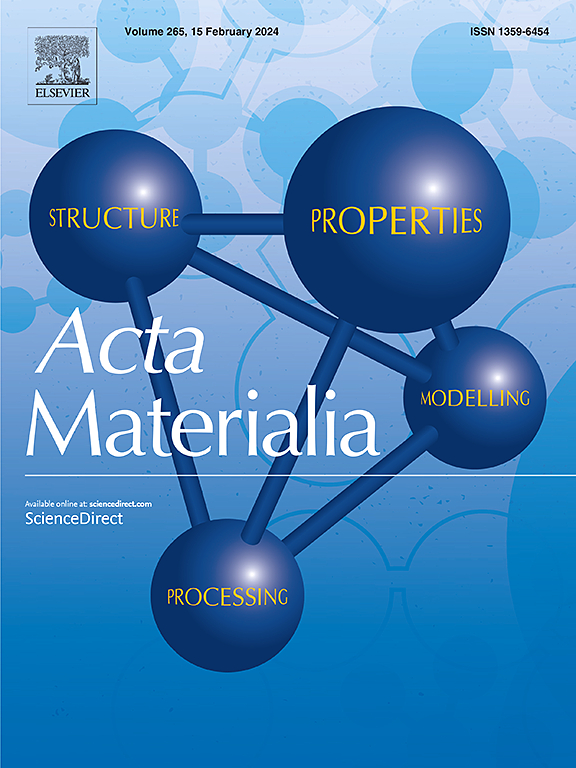Mechanical Behavior and Size–Dependent Strength of Small Noble-Metal Nanoparticles
IF 8.3
1区 材料科学
Q1 MATERIALS SCIENCE, MULTIDISCIPLINARY
引用次数: 0
Abstract
While metal nanoparticles are foundational to many advanced technologies, the instability of small particles limits their performance and lifetime. Extensive prior work has demonstrated size-dependent behavior, including “smaller-is-stronger”, “smaller-is-weaker”, and “liquid-like deformation”. However, mechanistic understanding of deformation processes has been hampered by the difficulty of characterizing nanoparticles as they fail. Here, we have compressed nanoparticles to failure with in situ transmission electron microscopy, linking their strength to direct observation of failure mechanisms. More than 250 tests, conducted on particles of Au, Ag, and Pt with sizes ranging from 3 to 130 nm, reveal a complex, non-monotonic dependence of strength on particle size. Deformation in larger particles (130 nm down to approximately 15 nm) is carried by dislocations nucleating from the surface. Without any observable change in mechanism, the nanoparticles first exhibit strengthening with decreasing size, reach a peak strength at around 30–60 nm, then show weakening. Deformation in intermediate-size particles (15 to approximately 5 nm) exhibits a mix of plasticity and diffusive deformation. Finally, the very smallest particles, with single-digit-nanometer sizes, exhibit homogeneous diffusive deformation that contradicts recent theories, and is instead well described by the zero-creep analysis. Overall, this work reveals the regimes and mechanisms underlying nanoparticle failure, across sizes and across materials.

小型贵金属纳米颗粒的力学行为和尺寸依赖性强度
虽然金属纳米颗粒是许多先进技术的基础,但小颗粒的不稳定性限制了它们的性能和使用寿命。先前的大量工作已经证明了尺寸依赖性行为,包括“越小越强”、“越小越弱”和“液体样变形”。然而,对变形过程的机理理解一直受到表征纳米颗粒的困难的阻碍。在这里,我们用原位透射电子显微镜将纳米颗粒压缩到失效状态,将其强度与直接观察失效机制联系起来。对尺寸从3到130纳米的Au、Ag和Pt颗粒进行了250多次测试,揭示了强度与颗粒尺寸的复杂非单调关系。较大颗粒(从130纳米到大约15纳米)的变形是由表面形成核的位错进行的。在未观察到任何变化的情况下,纳米颗粒先是随着尺寸的减小而增强,在30-60 nm左右强度达到峰值,然后逐渐减弱。中等尺寸颗粒(15至约5nm)的变形表现为塑性和扩散变形的混合。最后,具有个位数纳米尺寸的最小颗粒表现出均匀的扩散变形,这与最近的理论相矛盾,相反,零蠕变分析很好地描述了这一点。总的来说,这项工作揭示了纳米颗粒在不同尺寸和不同材料下失效的机制。
本文章由计算机程序翻译,如有差异,请以英文原文为准。
求助全文
约1分钟内获得全文
求助全文
来源期刊

Acta Materialia
工程技术-材料科学:综合
CiteScore
16.10
自引率
8.50%
发文量
801
审稿时长
53 days
期刊介绍:
Acta Materialia serves as a platform for publishing full-length, original papers and commissioned overviews that contribute to a profound understanding of the correlation between the processing, structure, and properties of inorganic materials. The journal seeks papers with high impact potential or those that significantly propel the field forward. The scope includes the atomic and molecular arrangements, chemical and electronic structures, and microstructure of materials, focusing on their mechanical or functional behavior across all length scales, including nanostructures.
 求助内容:
求助内容: 应助结果提醒方式:
应助结果提醒方式:


